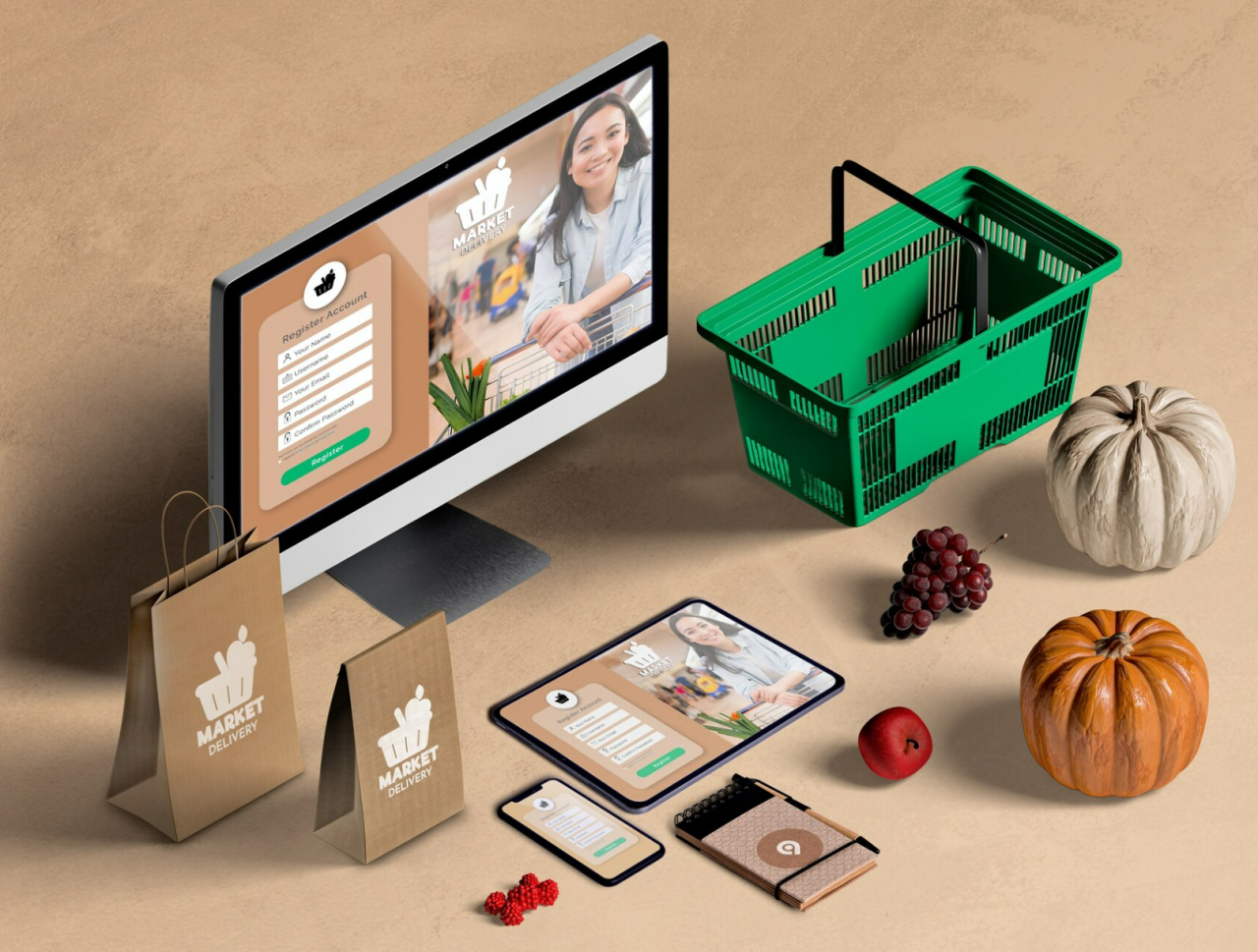Insight Blog
Agility’s perspectives on transforming the employee's experience throughout remote transformation using connected enterprise tools.
7 minutes reading time
(1302 words)
Designing a Seamless Omnichannel Product Showcase Experience
In this handy guide, we'll steer you through what omnichannel means in the context of product showcasing, why it's essential.
In today's digital business landscape, UK companies are continually seeking innovative ways to showcase their products and services to a diverse and ever-evolving audience.
With the rise of e-commerce, the importance of creating a seamless omnichannel product showcase experience has never been more critical. By seamlessly integrating the online and offline worlds, businesses can captivate their customers, boost brand loyalty, and ultimately drive sales.
In this handy guide, we'll steer you through what omnichannel means in the context of product showcasing, why it's essential, and how UK businesses like yours can successfully design and implement a seamless omnichannel product showcase experience.
The Omnichannel Revolution: Beyond Multichannel
Before we delve into the "how," let's first define what we mean by "omnichannel." While "multichannel" refers to a business's presence on various platforms (e.g., physical stores, website, social media), "omnichannel" takes things a step further. It means creating a unified and consistent experience across all these channels.
In the context of product showcasing, it means that your customers should have the same look and feel whether they're browsing your products in-store, on your website, via a mobile app, or on social media.
The goal is to seamlessly connect the dots in the customer journey. By doing so, you make it easy for them to explore, learn about, and purchase your products, regardless of where they start.
Why Omnichannel Matters
- Consistency Builds Trust: Omnichannel consistency builds trust with your audience. When customers see the same branding, messaging, and product information across all channels, it reinforces your credibility.
- Enhanced Customer Experience: Omnichannel experiences reduce friction. They allow customers to begin their journey in one channel and continue seamlessly in another, enhancing the overall experience.
- Increased Sales: A well-designed omnichannel approach boosts sales. Customers are more likely to make a purchase when they encounter a consistent and engaging product showcase experience.
- Data-Driven Insights: Omnichannel data collection provides valuable insights into customer behaviour and preferences, enabling better product recommendations and personalization.
- Competitive Advantage: In a competitive market, offering a seamless omnichannel experience can be a key differentiator that sets your business apart.
Designing the Seamless Omnichannel Product Showcase
Now that we understand the "what" and "why" of omnichannel, let's dive into the "how." Here's a step-by-step guide to designing a seamless omnichannel product showcase experience for your UK business.
1. Know Your Audience Inside and Out
Start by thoroughly understanding your target audience. What are their preferences, pain points, and shopping behaviours? By collecting and analysing customer data, you can create customer personas and tailor your product showcase accordingly.
2. Consistent Branding and Messaging
Your branding and messaging should be consistent across all channels. This includes everything from your logo and colour scheme to your tone of voice and product descriptions. Ensure that your unique selling propositions are communicated consistently.
3. A Unified Product Catalogue
Your product catalogue should be unified across all channels. Make sure that the same products are available both online and in-store, and keep product information, pricing, and availability up to date in real-time.
4. Seamless Inventory Management
Inventory management is crucial in omnichannel operations. You must avoid disappointing customers with out-of-stock items. Implement systems that enable real-time inventory tracking to ensure accurate information.
5. Mobile Optimisation
In the UK, mobile device usage continues to rise. Ensure that your product showcase is fully responsive and optimised for mobile users. Make it easy for customers to navigate your website, app, or social media platforms on their smartphones.
6. Content Consistency and Quality
Product descriptions, images, and videos should maintain the same quality and consistency across all channels. Engaging, informative content is key to capturing the attention of your audience.
7. Personalisation and Recommendations
Leverage customer data to personalize product recommendations. Offer suggestions based on the customer's past interactions with your brand. This makes your product showcase not just relevant but enticing.
8. Integration of Technology
Implement technology solutions that facilitate omnichannel operations. For instance, use an integrated point-of-sale (POS) system that links your physical and digital stores, or employ customer relationship management (CRM) software to manage customer data and interactions.
9. Customer Support and Service
Provide consistent customer support across channels. Ensure that your customer service team can access a customer's history, regardless of where they initiated contact, to provide seamless and efficient assistance.
10. Data Analytics and Continuous Improvement
Track and analyse customer data and behaviour to understand which channels and approaches are most effective. Use this information to continuously improve your omnichannel product showcasing strategy.
Follow us and access great exclusive content everyday: Follow us on Google News
Embracing Creative Content Showcasing
- Flipbooks: Flipbooks are a great way to provide engaging content for your audience on your website, whether that content is brochures, catalogues, or magazines. They offer a delightful user experience, allowing visitors to virtually flip through pages, zoom in on images, and interact with the content. Flipbooks, like the ones you can create with the help of Issuu, can be particularly effective for businesses in the fashion, publishing, and design industries, as they bring a tactile, print-like experience to the digital realm.
- Interactive Infographics: Visual content, such as interactive infographics, can simplify complex information, making it more digestible for your audience. These interactive graphics can be used to showcase product features, industry statistics, or any data that benefits from a dynamic presentation.
- Video Storytelling: Videos remain a powerful tool for engaging your audience. Consider using video to tell stories about your products, share behind-the-scenes glimpses of your business, or provide interactive tutorials. Video content is a versatile medium that can be easily shared across various channels.
- Augmented Reality (AR): Augmented reality can add an exciting dimension to your product showcase. Through AR applications or plugins, customers can virtually "try on" clothing, visualise furniture in their home, or see how a piece of artwork would look on their wall. As AR technology becomes more accessible, its potential for creating immersive and engaging content is vast.
- Virtual Tours: For businesses with physical locations, offering virtual tours is a fantastic way to bridge the gap between the online and offline worlds. Real estate agencies, hotels, and event venues, for example, can provide virtual tours that allow potential customers to explore spaces as if they were there in person.
By incorporating these creative content showcasing methods, your UK business can add a unique and interactive dimension to your omnichannel product presentation.
Measuring Success: Key Performance Indicators (KPIs)
Measuring the success of your seamless omnichannel product showcase is vital for continuous improvement. Consider these key performance indicators to evaluate your strategy:
- Customer Satisfaction: Regularly gather customer feedback through surveys and online reviews to gauge their satisfaction with your omnichannel experience.
- Conversion Rates: Monitor the conversion rates of customers who start their journey in one channel and complete it in another. This indicates the effectiveness of your seamless transitions.
- Sales Data: Analyse sales data to determine which channels are driving the most revenue and adjust your strategy accordingly.
You may also like: Best Apps for Employees: UPDATED 2022 – A Complete Guide
Free ebook: How To Get Your Intranet Off The Ground
Wrapping up
Designing a seamless omnichannel product showcase experience is essential for UK businesses looking to thrive in the digital age. By unifying your online and offline presence, you can engage your audience consistently, enhance their shopping experience, and drive sales.
Understanding your audience, maintaining branding consistency, and employing technology solutions are key steps in achieving this, and the future promises even more exciting opportunities for omnichannel success.
As the landscape continues to evolve, businesses that embrace the omnichannel revolution will be well-positioned to thrive in the years to come.
Categories
Blog
(2612)
Business Management
(323)
Employee Engagement
(212)
Digital Transformation
(174)
Growth
(119)
Intranets
(113)
Remote Work
(61)
Sales
(48)
Collaboration
(36)
Project management
(29)
Culture
(28)
Customer Experience
(26)
Knowledge Management
(21)
Leadership
(20)
Comparisons
(6)
News
(1)
Ready to learn more? 👍
One platform to optimize, manage and track all of your teams. Your new digital workplace is a click away. 🚀
Free for 14 days, no credit card required.













